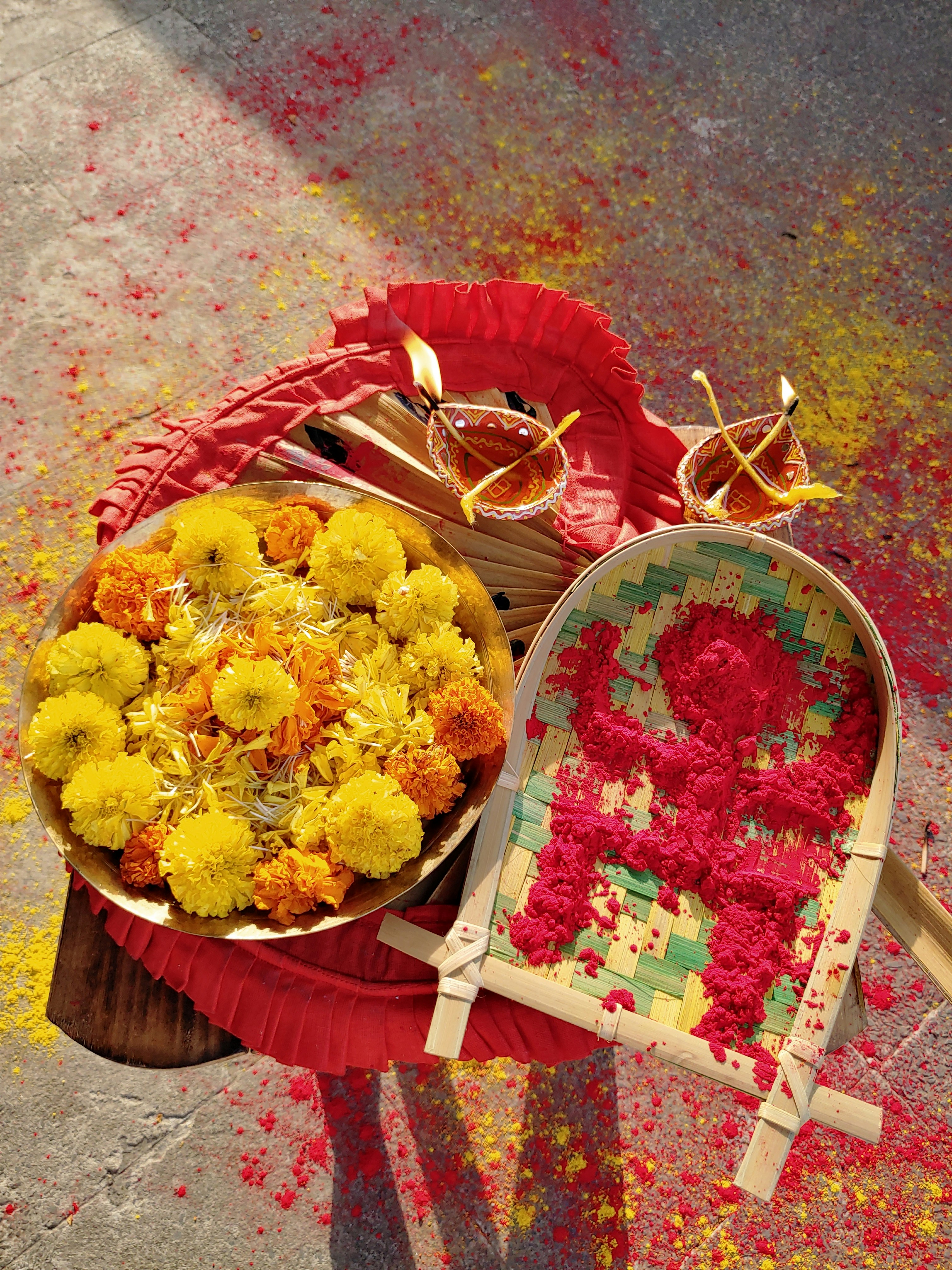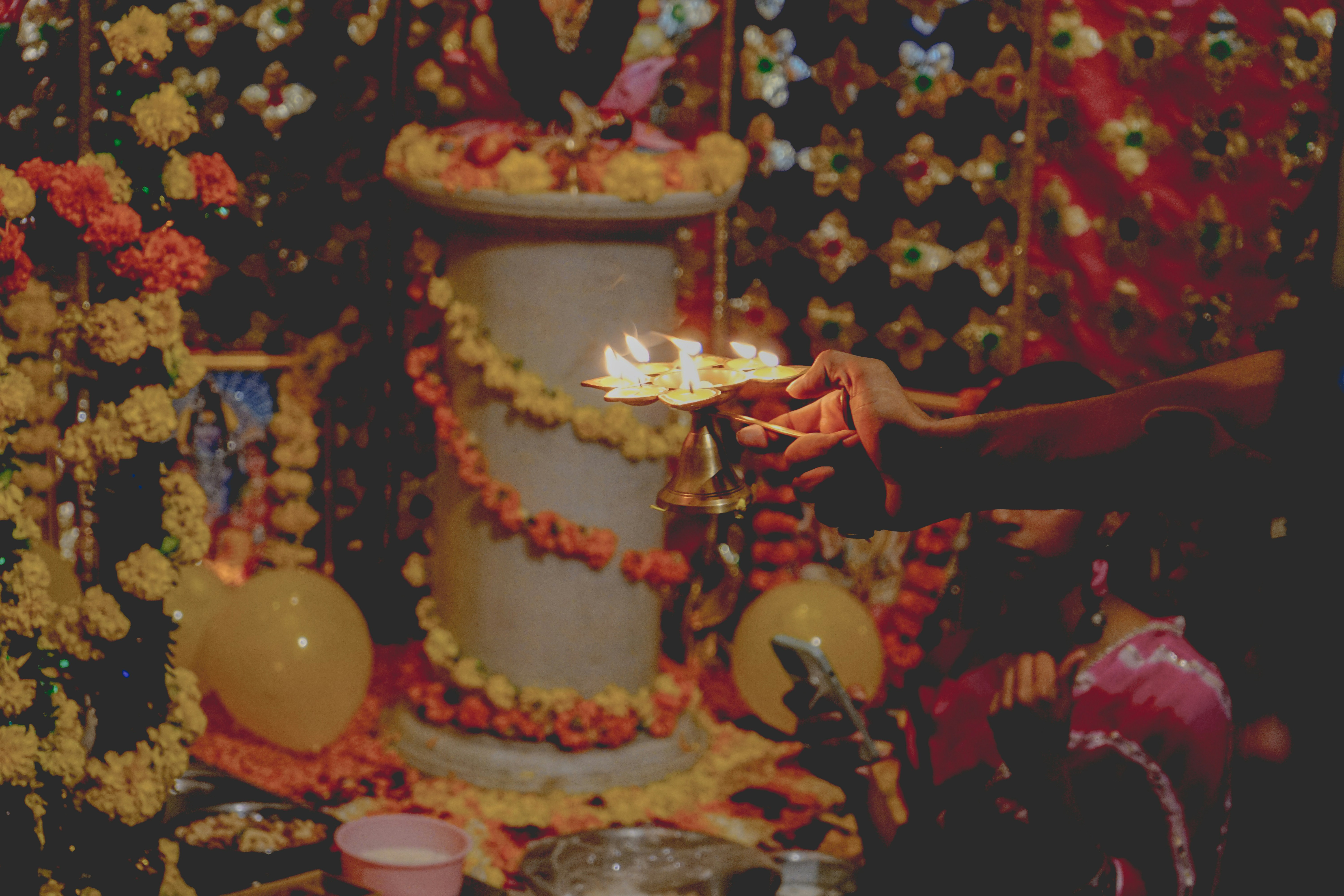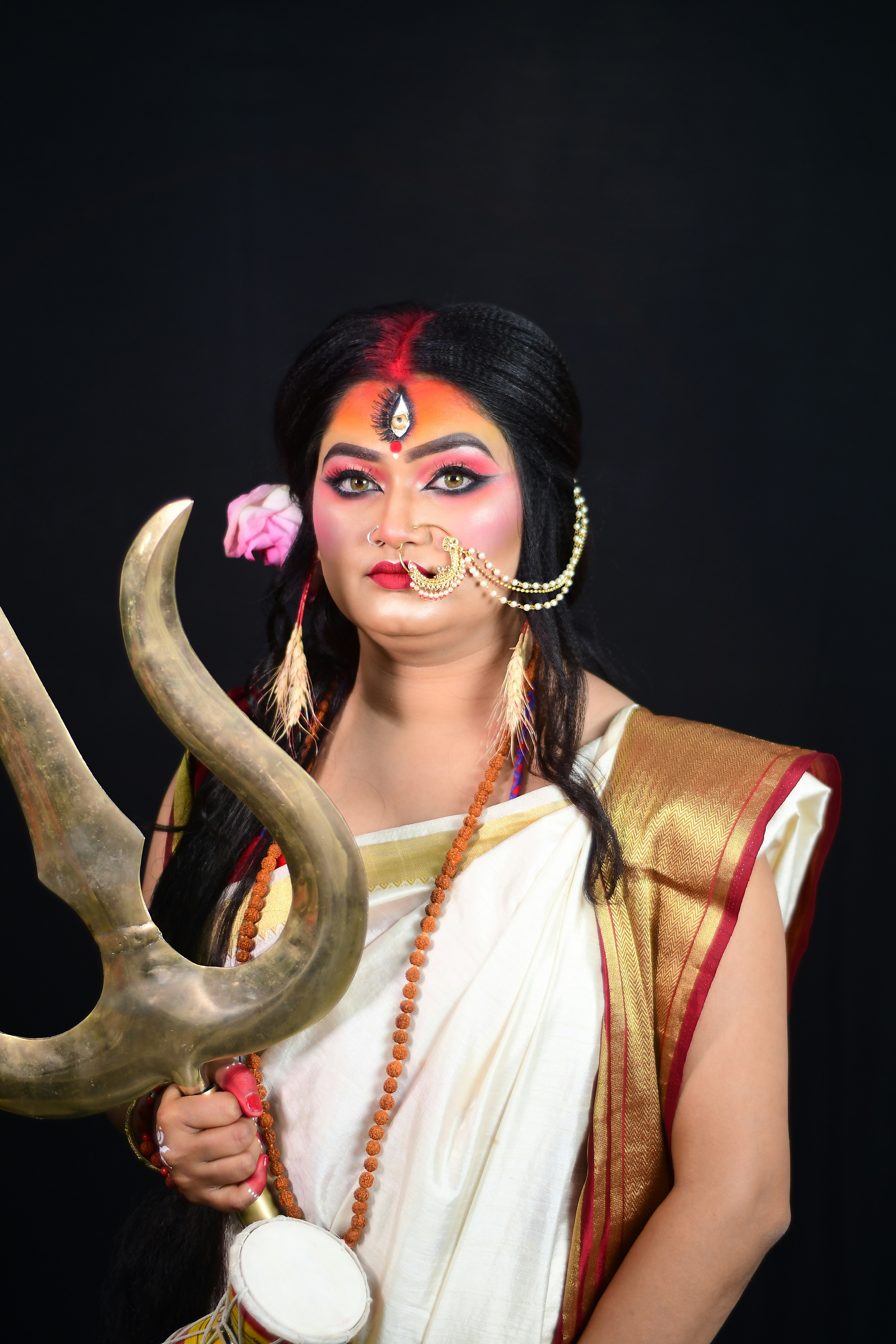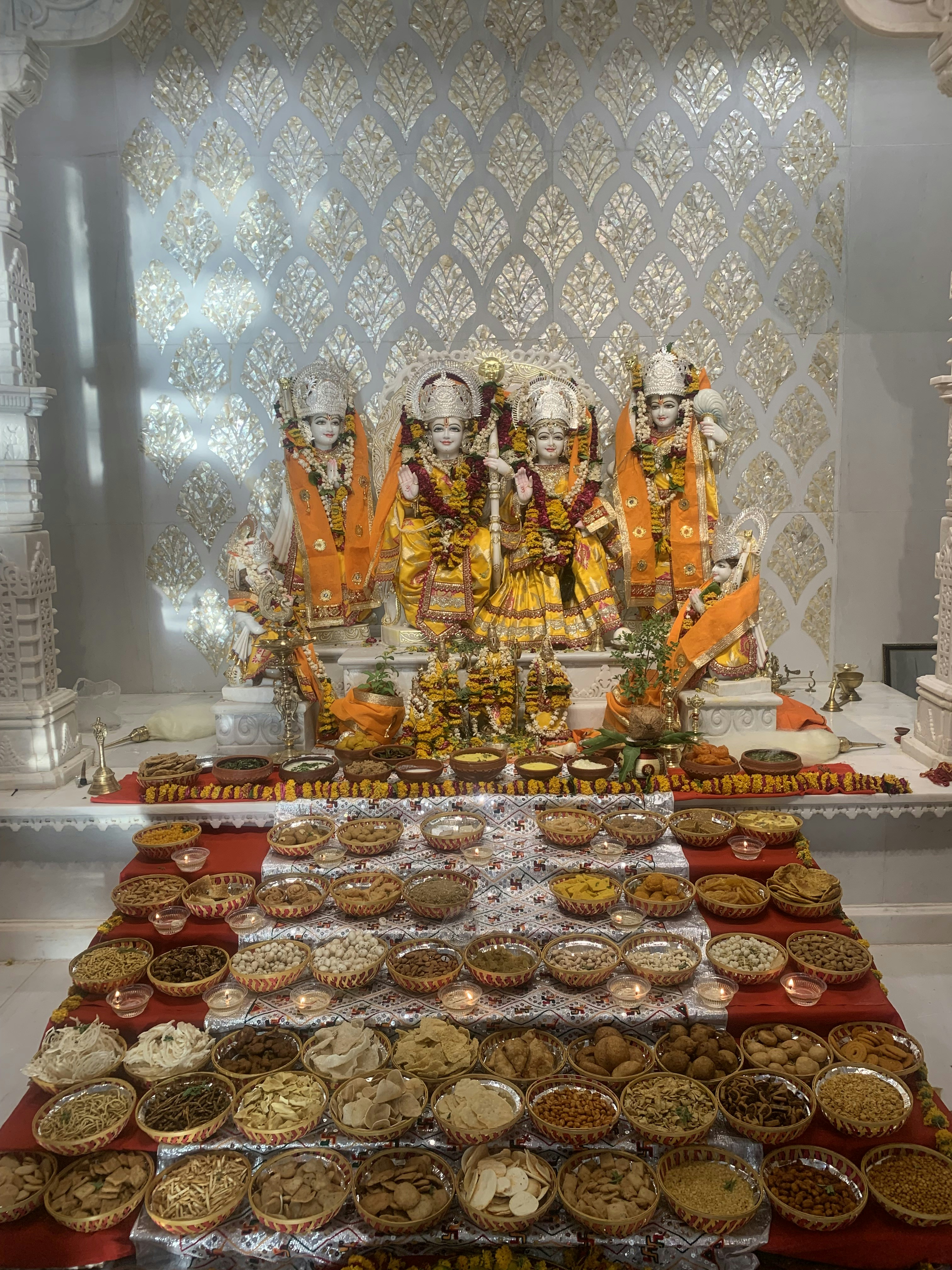Introduction to Vijayadashami
Vijayadashami, also referred to as Dussehra, is a significant festival celebrated in India, marking the victory of good over evil. This ancient festival is deeply rooted in Hindu mythology, commemorating the triumph of Lord Rama over the demon king Ravana. It symbolizes the idea that righteousness ultimately prevails over wrong, embodying the universal theme of good conquering evil.
The festival not only has religious connotations but also highlights the rich cultural heritage of India. Celebrated in various forms across different regions, Vijayadashami features vibrant traditions and rituals. In North India, the festival is renowned for the grand enactments of the Ramayana, where the battle scenes between Lord Rama and Ravana are portrayed. Communities gather to witness these performances, culminating in the burning of effigies of Ravana, symbolizing the destruction of evil.
In the southern parts of India, Vijayadashami is celebrated with intricate rituals and pujas, where families worship tools, books, and vehicles, seeking blessings for knowledge and prosperity. This aspect underscores the festival’s relevance in promoting education and wisdom. Additionally, in West Bengal, the festival coincides with the immersion of Goddess Durga’s idol, celebrating her victory over the buffalo demon Mahishasura, further intertwining the themes of valor and divine strength.
Today, Vijayadashami holds immense significance in contemporary India, serving as a reminder of the enduring values of justice and virtue. As society evolves, the festival continues to inspire new generations to uphold these ideals, making Vijayadashami not only a religious observance but also a celebration of cultural identity. As the celebrations for Vijayadashami 2025 approach, the essence of this festival remains an integral part of India’s social fabric, unifying diverse communities through shared traditions and collective aspirations for a just world.
The Significance of Ravi Yoga
Ravi Yoga is a term used in Hindu astrology to describe a particular celestial alignment where the planet Sun, or Ravi, plays a pivotal role in conjunction with other planetary bodies. This astrological configuration is believed to create a powerful synergy that enhances the overall auspiciousness of events taking place during this period. The significance of Ravi Yoga extends beyond mere astrology; it serves as a guiding principle for various religious, cultural, and social practices in Hinduism.
During Ravi Yoga, the normal influences of the Sun are amplified, imparting a heightened sense of vitality and energy. This is particularly relevant for festivals such as Vijayadashami, which are steeped in tradition and spiritual significance. The auspiciousness associated with Ravi Yoga is attributed to its potential to dispel negativity and empower individuals to undertake new ventures, making it an ideal time for ceremonies, rituals, and the initiation of important tasks.
The spiritual energy during this period resonates deeply with devotees, fostering an enhanced connection to the divine. People participating in rituals during Ravi Yoga are believed to receive divine blessings that aid in overcoming challenges and achieving success in their endeavors. The alignment of celestial bodies during this yoga is thought to align human consciousness with cosmic energies, allowing for a more profound engagement in spiritual practices.
Furthermore, Ravi Yoga is also associated with fostering positive relationships and community bonding. Festivals like Vijayadashami draw people together, enabling them to partake in cultural traditions while capitalizing on the auspicious energy of this celestial alignment. As communities celebrate their shared heritage, the benefits of Ravi Yoga extend, creating an environment ripe for harmony, prosperity, and spiritual growth.
Astrological Implications of Vijayadashami 2025
Vijayadashami, also known as Dussehra, is a significant festival in Hindu culture that symbolizes the triumph of good over evil. In 2025, the festival holds extraordinary astrological significance due to the unique planetary positions that will influence the events of this auspicious day. The date of Vijayadashami on October 22, 2025, coincides with a rare celestial alignment, particularly characterized by the presence of Ravi Yoga. This astrological phenomenon occurs when the Sun is in a favorable position, enhancing the energies associated with this day.
The planetary configuration on Vijayadashami 2025 will likely include strong placements of benefic planets such as Jupiter and Venus, which further magnify the positive implications of Ravi Yoga. Jupiter, known as the planet of wisdom and expansion, will be in a position that encourages positive transformation and growth. This sets a spiritually conducive environment where seekers may experience heightened states of awareness and clarity during their traditional rituals and celebrations.
Moreover, the interaction of vibrant planetary energies during this period can enable devotees to set intentions with increased potency. It is considered an auspicious time for new beginnings, making the rituals performed during this Vijayadashami particularly impactful. Participants engaging in prayers and festive activities may find themselves closely aligned with the higher vibrations of the cosmos, leading to a deeper spiritual experience.
As such, the astrological implications surrounding Vijayadashami 2025 not only enhance the celebratory tone of the festival but also offer participants significant spiritual benefits. Aligning personal and communal practices with the energies of Ravi Yoga may facilitate a profound connection to divine energies, enriching the festivities in a meaningful way.
Traditional Celebrations of Vijayadashami
Vijayadashami, also known as Dussehra, is a significant Hindu festival that symbolizes the victory of good over evil. Celebrated with great fervor across India and various parts of the world, this festive occasion is marked by diverse cultural practices that vary by region. One of the most recognizable traditions is Durga Puja, particularly prevalent in West Bengal. This ceremony involves elaborate rituals and artistic displays in honor of Goddess Durga, culminating in immersive cultural performances that attract large crowds. The intricately designed idols of the goddess are immersed in rivers or seas as a symbolic farewell, representing the belief that she will return the following year.
In northern India, Vijayadashami is synonymous with Ramlila performances, which depict the life of Lord Rama culminating in the battle against Ravana. These theatrical performances are often held in open spaces, attracting both locals and tourists. Ramlila portrays the epic tale of the Ramayana, emphasizing morals such as justice and truth. Participants don traditional attire, and the mesmerizing enactments are accompanied by music and dance, providing a rich cultural experience for all attendees.
Another hallmark of Vijayadashami is the burning of effigies of Ravana, symbolizing the triumph of Lord Rama over the ten-headed demon king. This tradition is particularly prominent in regions like Punjab and Uttar Pradesh. The effigies are typically filled with fireworks and are set ablaze during grand celebrations. Spectators gather in large numbers to witness this spectacle, reinforcing the shared cultural narrative of the struggle against evil.
Though the underlying themes of Vijayadashami remain consistent—celebrating virtue and denouncing malevolence—the various regional practices during this time create a rich tapestry of traditions. Such celebrations foster a sense of community and belonging, ensuring that the spirit of Vijayadashami endures across generations.
Special Rituals and Customs for 2025
The celebration of Vijayadashami in 2025 is particularly significant due to the occurrence of the auspicious Ravi Yoga, a planetary alignment that brings enhanced spiritual energy. This year, individuals and communities will engage in various rituals and customs that not only honor the victory of good over evil but also leverage the favorable energies associated with Ravi Yoga. The rituals are imbued with a sense of reverence and communal spirit, serving as a means to connect with divine blessings.
One notable custom for this year’s celebration is the performance of special prayers or “pujas” at home and in community temples. People are encouraged to invoke deities like Durga, Lakshmi, and Ganesha through specific mantras and offerings that are believed to be more potent during Ravi Yoga. For instance, reciting the Durga Saptashati is considered highly beneficial, as it embodies the essence of triumph and resilience. Offering fresh fruits, flowers, and sweets is also a way to express gratitude.
Communities may come together to organize traditional dance and music performances, thereby reinforcing social bonds and communal pride. These events often include local folklore and theatrical representations of the Ramayana and Mahabharata, offering participants a chance to reflect on the teachings of these epics. The rituals incorporate a sense of festivity, highlighted by the vibrant colors and joyous gatherings.
Additionally, during this auspicious period, individuals may observe fasting or abstaining from certain foods as a form of penance and purification. Many will light “diyas” or oil lamps to symbolize the dispelling of darkness, inviting blessings and prosperity into their homes. The culmination of these activities on Vijayadashami is a collective way for people to embrace both tradition and spiritual enlightenment in 2025.
Festive Foods and Delicacies of Vijayadashami
Vijayadashami, also known as Dussehra, is not only celebrated with fervor through rituals and festivities but is also a time for indulging in a variety of traditional dishes that hold significant cultural importance. The culinary aspects of Vijayadashami reflect the rich heritage and diversity of Indian cuisine. Each region has its unique offerings, which adds to the festival’s vibrant tapestry of flavors. During this auspicious occasion, families come together to prepare and savor an array of delicacies, symbolizing prosperity and vitality.
One of the quintessential foods associated with Vijayadashami is the delectable sweet called “Gulab Jamun.” These small, round milk solids, deep-fried and soaked in fragrant rose syrup, are a favorite among many. They symbolize joy and are often served during festive gatherings to signify the sweetness of life. Another popular sweet is “Kheer,” a creamy rice pudding made with milk, sugar, and fragrant spices such as cardamom. Kheer is not merely a dessert but is often offered as a prasad during the puja, representing devotion and gratitude.
In addition to sweets, savory dishes like “Chole Bhature” or “Puri Bhaji” are also integral to Vijayadashami meals. These dishes, rich in flavor and texture, often bring families together around the dining table. Chole, a spiced chickpea curry, pairs perfectly with fluffy bhature, while puri bhaji serves as a comforting classic, made with deep-fried bread and spiced potato filling. Each of these foods is steeped in tradition, and preparing them during Vijayadashami is not just a culinary activity, but also a way to evoke family memories and celebrate cultural heritage.
Thus, the festive foods of Vijayadashami reflect legacy and joy, creating a bond among individuals. These delicacies, whether sweet or savory, enrich the celebration, making the festival a truly nourishing experience for both the body and spirit.
Connecting with the Spiritual Essence of the Festival
Vijayadashami, also known as Dussehra, marks a significant moment in the Hindu calendar, celebrated to honor the victory of good over evil. This festival is not only a time for festivities and gatherings but also a unique opportunity to connect with its profound spiritual essence. One of the most potent ways to tap into this spiritual essence is through meditation, prayers, and various rituals, especially during the auspicious Ravi Yoga period, which enhances the spiritual vibrations of the festival.
During Vijayadashami, individuals can engage in meditation practices that promote inner peace and self-awareness. The higher energies present during the Ravi Yoga auspicious muhurat provide a perfect backdrop for such activities. Finding a quiet space to meditate can help channel the positive energies of the period, enabling practitioners to delve deeper into their spiritual journey. Focusing on breath and setting intentions for the coming year can amplify the benefits of meditation during this significant time.
Prayer also plays an essential role in connecting to the spiritual aspect of Vijayadashami. Reciting mantras or engaging in devotional singing can create a powerful atmosphere conducive to spiritual growth. It is recommended to utilize specific prayers that resonate with the themes of victory and righteousness, offering one a sense of connection to the divine. Performing rituals, such as lighting diyas or creating a small altar with deities, aids in inviting positive energies into one’s home, aligning with the festival’s sacred nature.
Moreover, participating in community rituals allows individuals to connect with others who share similar beliefs and values. This communal aspect of the festival enhances spiritual connections, creating a collective energy that elevates the entire experience. By immersing oneself in the spiritual practices associated with Vijayadashami during the Ravi Yoga period, individuals can foster a deeper understanding of the festival’s significance, ultimately contributing to personal and communal well-being.
Modern Interpretations and Celebrations
Vijaydashami, also known as Dussehra, is a significant festival that marks the victory of good over evil. In contemporary society, the ways in which this festival is celebrated have evolved, influenced by cultural shifts, technological advancements, and the participation of younger generations. Traditional rituals, while still adhering to historical significance, are increasingly being adapted to fit into modern lifestyles.
One notable change in the celebration of Vijayadashami is the manner in which rituals are conducted. While fairs and elaborate processions featuring effigies of the demon king Ravana remain prevalent, many families now opt for smaller, more personal observations at home. This shift often reflects busy urban lifestyles, where congregating for large public events may be less feasible. Thus, home-based pujas and celebrations are growing in popularity, allowing families to uphold traditions while accommodating their schedules.
The influence of technology is also reshaping Vijayadashami celebrations. Social media platforms are become essential tools for sharing experiences, inviting friends to virtual events, and discussing the festival’s meanings. Live streaming rituals and festivities fosters a sense of connectivity, allowing those unable to participate in person to feel included in the celebrations. Additionally, digital resources are widely available, providing guidance on conducting rituals, recipes for festive foods, and creative decoration ideas.
Moreover, younger generations are not only engaging with the traditional values of Vijayadashami but are also infusing their interpretations into the celebrations. Themes of sustainability and social justice are increasingly reflected in how festivals are planned and executed. For instance, there is a growing emphasis on eco-friendly materials for decorations and effigies, as well as community-focused initiatives that promote charitable actions during the festival. Through these modern lenses, Vijayadashami continues to thrive and expand its significance in contemporary culture.
Conclusion: Embracing the Spirit of Vijayadashami 2025
Vijayadashami, also known as Dussehra, is a significant festival that symbolizes the triumph of good over evil. Celebrated across India, this festival holds a special place in the hearts of millions, and the year 2025 promises to enhance this reverence through its auspicious Ravi Yoga Muhurat. The timing of this celebration holds immense astrological importance, believed to bring positive energy and success to the festivities. As families and communities prepare to engage in traditional rituals and communal celebrations, it becomes essential to understand the layers of meaning that Vijayadashami encapsulates.
The vibrant festivities are not solely about the rituals but also about the renewal of commitments to one’s values and moral lessons inherited from the past. In 2025, we are called to reflect on the versatile nature of traditions that have evolved while holding core values intact. The celebration provides a platform for bridging the gap between generations, merging ancient practices with contemporary interpretations. This blend is evident in how modern technology integrates into the celebrations, from virtual gatherings to online performances that depict the epic tales of Ramayana and Mahabharata.
Ultimately, embracing the spirit of Vijayadashami in 2025 means acknowledging the deep-rooted cultural heritage while also emphasizing progress and unity. It invites everyone to participate in a cohesive celebration that respects traditions yet welcomes innovations. As communities come together to observe this auspicious occasion, may they foster an environment of love, respect, and renewal. The Ravi Yoga Muhurat adds an extra layer of positivity, encouraging the realization of dreams and aspirations among individuals representing diverse backgrounds. Therefore, as we approach Vijayadashami 2025, let us be part of this transformative celebration, symbolizing hope, resilience, and the ongoing victory of righteousness.





